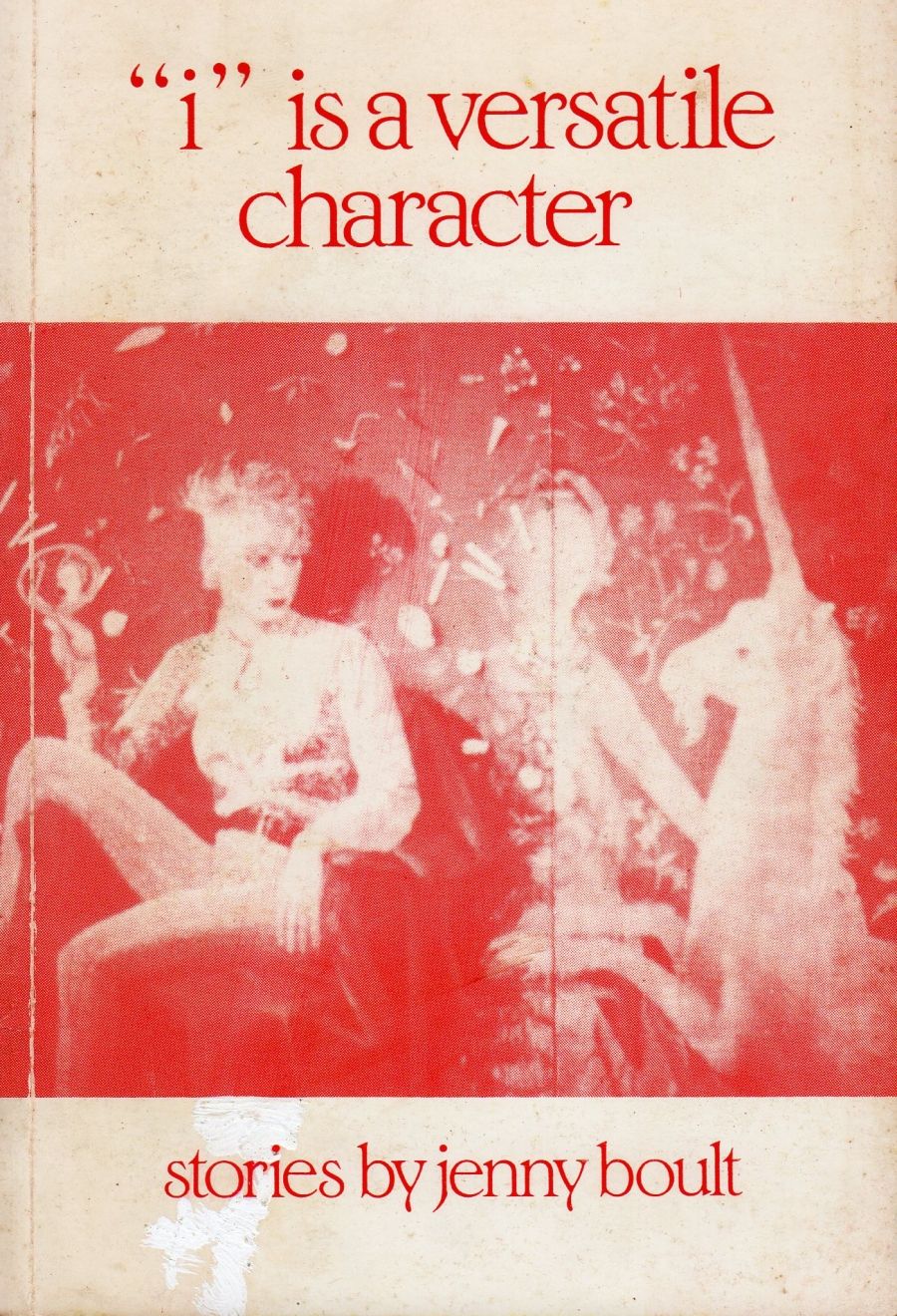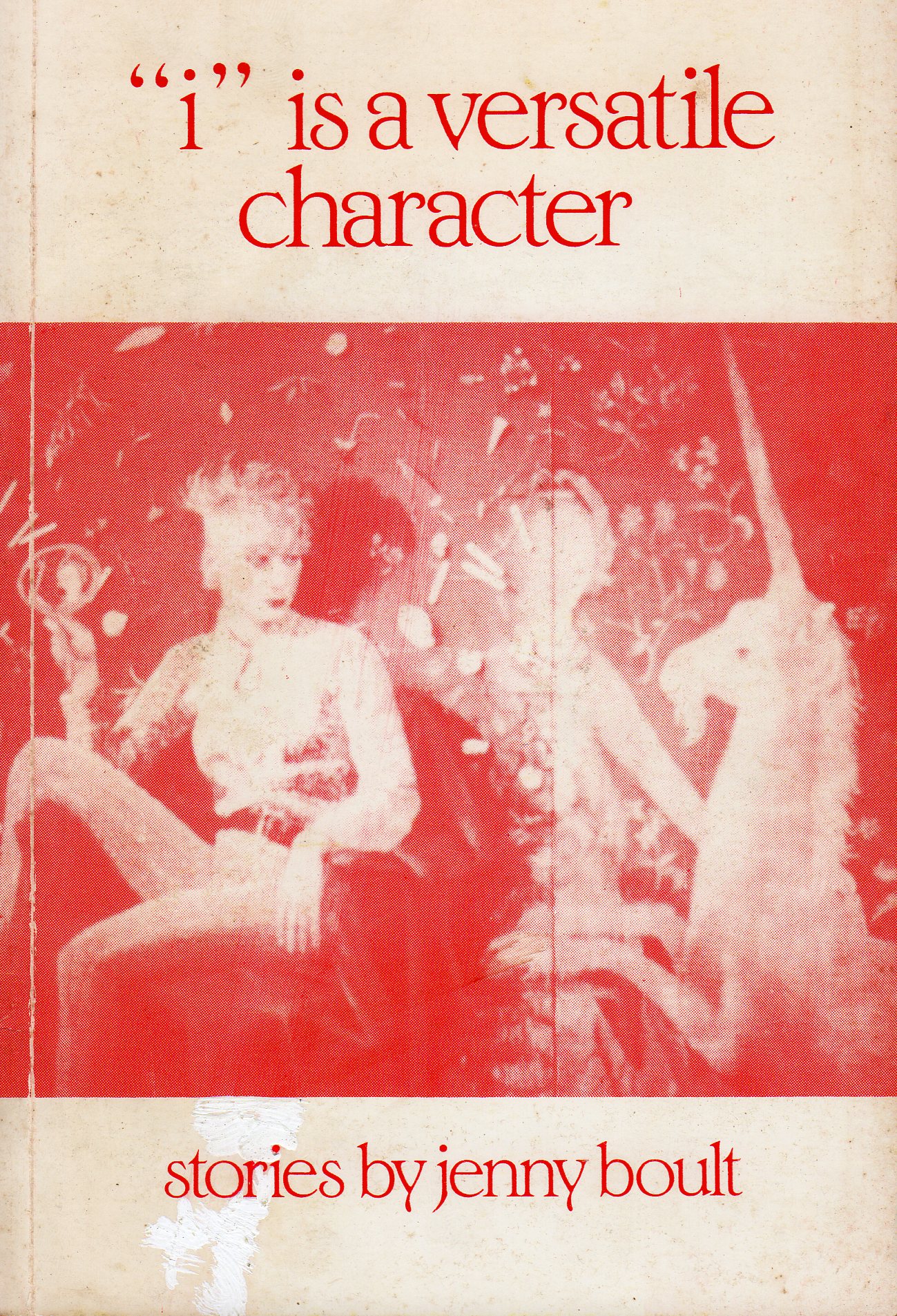
- Free Article: No
- Contents Category: Fiction
- Review Article: Yes
- Article Title: Reading Aloud
- Online Only: No
- Custom Highlight Text:
Jenny Boult’s sixth book ‘I’ is a versatile character is also her first book of prose. It follows her play Can’t Help Dreaming which was performed by the All Out Ensemble in Adelaide, and four books of poetry, including The Hotel Anonymous, which won the 1981 Anne Elder Award.
The stories in this collection vary greatly in form and content, but they share a particular ‘poetic’ style which is rare among contemporary Australian prose writers. Although Boult is by no means the first Australian poet to publish fiction, she has been more successful than most in bringing to her prose many of the skills she has developed in writing poetry.
- Book 1 Title: "I" is a Versatile Character
- Book 1 Biblio: WAV publications, 96pp, $8.95 pb
- Book 1 Cover Small (400 x 600):

- Book 1 Cover (800 x 1200):

Her experience in reading and performing poems has obviously influenced the way she uses individual words. There is a sense throughout the collection of the importance of the sound of individual words. Indeed, at times, one is almost tempted to read the stories aloud.
The narrative structure of the stories also relies far more on a poetic model than any conventional prose narrative. Rather than any sense of linear progression ( or the conscious effort to flout conventions), Boult builds her stories around a series of images which eventually build into an extensive overview, encapsulating the whole story. The most powerful examples of this can be found in the title piece ‘“I” is a versatile character’, and the impressive longer piece ‘no room at the top’.
There is a sense of discipline in her work which comes as somewhat of a shock after her apparent poetic freedom. In ‘no room at the top’, for example, it is not until we get to the final section that we realise that the piece has been loosely structured around the alphabet – ‘this is the last letter in the alphabet of pain. the final broken rung on the ladder. the damaged knee and the whiplash of intention’. It is not an easy alphabet, or a heavy handed one, but it firmly anchors the piece and allows the twenty-six sections to fall into place.
In ‘Twenty Questions’ Boult uses a similar device, only this time the anchor is in the title. We expect twenty questions, and, in a way, that is what we get. The only direct question, however, comes in the final section. In the preceding nineteen the questions grow out of the images, the pieces of the collage which Boult presents us with. We try to piece them together, looking for the answers as we go. But eventually, like Estragon and Vladimir in Waiting for Godot, we are returned to the beginning – ‘The audience asks, “who is she?” The woman invites them to look again’.
A comment must, unfortunately, be made on the way the book has been produced. The end of lines on the left-hand pages continually disappears into the spine, and I was also unimpressed by the typeface which was used. ‘M’, for example, always threatens to become a mere ink blotch. Although these are, perhaps, minor quibbles, they do distract from the overall effect of what otherwise is an impressive first collection of prose.


Comments powered by CComment